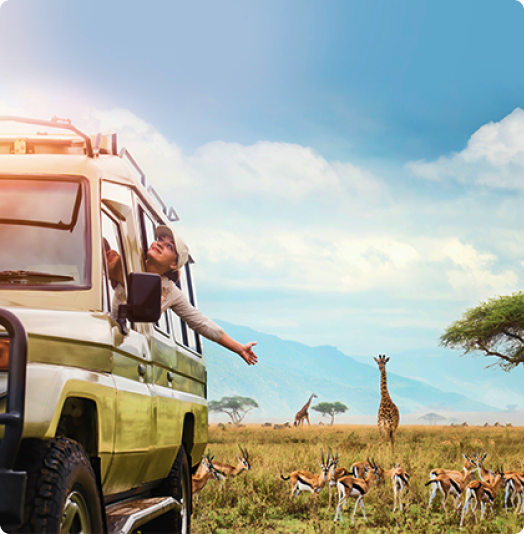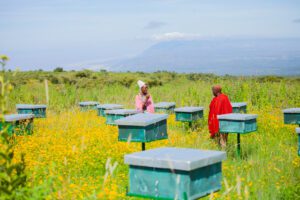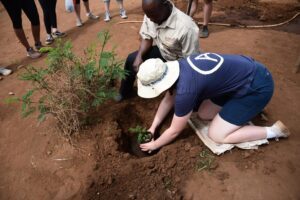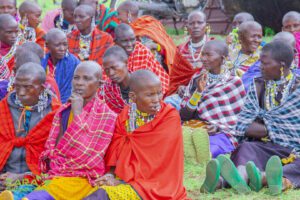Wildlife Conservation Efforts in Tanzania: Protecting Our Natural Heritage
Tanzania stands as a global beacon of biodiversity, where the sweeping plains of the Serengeti, the majestic Ngorongoro Crater, and the vast Selous Game Reserve create a tapestry of life found nowhere else on Earth. Home to over 4 million wild animals, including the iconic Big Five—lion, elephant, rhino, leopard, and buffalo—Tanzania hosts 20% of Africa’s large mammal species and six of the world’s 25 biodiversity hotspots. Yet, this natural heritage faces relentless threats from poaching, habitat loss, climate change, and human-wildlife conflict. At Zara Charity Tanzania, we are dedicated to protecting this irreplaceable ecosystem through community-driven conservation, anti-poaching initiatives, and sustainable tourism. Join us as we explore Tanzania’s wildlife conservation efforts and discover how you can help preserve our natural heritage for generations to come.
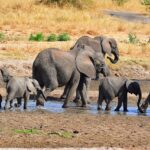

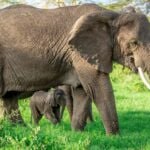
Why Wildlife Conservation Matters in Tanzania
Tanzania’s biodiversity is a cornerstone of its identity and economy. With over 38% of its land dedicated to protected areas, the country leads Africa in conservation efforts. These efforts are vital for several reasons:
- Ecological Balance: Healthy ecosystems support clean water, fertile soil, and climate regulation, benefiting both wildlife and human communities.
- Economic Impact: Ecotourism, driven by Tanzania’s wildlife, contributes significantly to the GDP, funding schools, hospitals, and infrastructure through park fees and tourism revenue.
- Cultural Heritage: Species like elephants and lions are woven into Tanzania’s cultural fabric, symbolizing strength and resilience for communities like the Maasai.
- Global Significance: As a biodiversity hotspot, Tanzania’s ecosystems play a critical role in global conservation, protecting species like the critically endangered black rhino.
However, challenges such as poaching, habitat fragmentation, and climate change threaten this delicate balance. At Zara Charity Tanzania, we tackle these issues head-on with innovative, community-focused solutions.
The Threats to Tanzania’s Biodiversity
Understanding the challenges is the first step toward effective conservation. Tanzania’s wildlife faces:
- Poaching and Illegal Wildlife Trade: The demand for ivory, rhino horn, and bushmeat drives illegal hunting, decimating populations of elephants and rhinos.
- Habitat Loss: Agricultural expansion, urbanization, and infrastructure development encroach on wildlife corridors, fragmenting habitats critical for migration.
- Human-Wildlife Conflict: Communities near protected areas suffer crop damage and livestock loss, leading to retaliatory killings of animals like lions and elephants.
- Climate Change: Altered rainfall patterns and rising temperatures disrupt migration routes, breeding cycles, and food availability, threatening species survival.
These threats demand a multifaceted response, combining enforcement, education, and sustainable development.
Zara Charity Tanzania’s Role in Conservation
At Zara Charity Tanzania, we believe that conservation is a shared responsibility. Our mission is to protect Tanzania’s wildlife while empowering local communities to thrive alongside nature. Our key initiatives include:
- Anti-Poaching Measures
Poaching remains a critical threat to Tanzania’s wildlife, particularly for elephants and rhinos. Zara Charity partners with the Tanzania Wildlife Authority (TAWA) to strengthen anti-poaching efforts through:
- Community Patrols: We train and equip local rangers in areas like the Serengeti and Selous Game Reserve to monitor and protect wildlife.
- Advanced Technology: Drones, GPS tracking, and camera traps enhance surveillance, enabling rapid response to poaching threats.
- Awareness Campaigns: We educate communities about the ecological and economic value of wildlife, reducing incentives for poaching.
Our anti-poaching programs have contributed to a decline in illegal hunting, with elephant populations in the Selous Game Reserve showing signs of recovery.
- Community-Based Conservation
Conservation is most effective when local communities are invested in its success. Zara Charity’s community-based programs include:
- Wildlife Management Areas (WMAs): We support WMAs like Randilen near Tarangire National Park, where communities manage conservation efforts and benefit from tourism revenue.
- Sustainable Livelihoods: By promoting beekeeping, eco-tourism, and craft-making, we provide alternatives to activities like deforestation or poaching.
- Education and Outreach: Our workshops in schools and villages foster pride in Tanzania’s natural heritage and teach coexistence strategies to reduce human-wildlife conflict.
These initiatives empower communities to become stewards of their environment, ensuring long-term conservation success.
- Sustainable Tourism
Ecotourism is a powerful tool for conservation, generating funds and raising awareness. Zara Charity promotes sustainable tourism by:
- Partnering with Ethical Operators: We work with tour operators who prioritize eco-friendly practices and adhere to leave-no-trace principles.
- Funding Conservation: Proceeds from our safari tours directly support anti-poaching patrols, community projects, and habitat restoration.
- Educational Eco-Tours: Our guided tours, such as bird watching in Lake Manyara or cultural experiences with Maasai communities, educate visitors about conservation challenges and solutions.
By choosing Zara Charity’s eco-tours, travelers contribute to both wildlife protection and community development.
Tanzania’s Biodiversity Hotspots
Tanzania’s protected areas are the backbone of its conservation efforts, each offering unique ecosystems and species:
- Serengeti National Park: Famous for the Great Migration, where millions of wildebeests and zebras traverse the plains, pursued by predators like lions and cheetahs.
- Ngorongoro Conservation Area: A UNESCO World Heritage Site, this crater hosts over 20,000 large animals, including the endangered black rhino, alongside Maasai pastoralists.
- Selous Game Reserve: One of the world’s largest faunal reserves, home to elephants, hippos, and wild dogs, though threatened by poaching and development.
- Ruaha National Park: Known for its rugged landscapes and high concentration of elephants and predators.
- Tarangire National Park: A dry-season haven for elephant herds and home to iconic baobab trees.
- Lake Manyara National Park: A birdwatcher’s paradise with flamingos, pelicans, and tree-climbing lions.
These areas are critical for preserving Tanzania’s biodiversity, but they face challenges like insufficient funding and overtourism. Zara Charity addresses these through advocacy and direct support.
Case Studies: Impactful Conservation Projects
Zara Charity collaborates with partners to drive impactful conservation projects. Here are some examples:
- Serengeti Lion Project: In partnership with researchers, we track lion populations to understand their behavior and protect their habitats, ensuring their survival amidst human encroachment.
- Honeyguide Foundation Collaboration: We work with the Honeyguide Foundation to train rangers and communities in conflict resolution, reducing human-wildlife conflicts near Tarangire and Ngorongoro.
- Roots & Shoots Program: Inspired by the Jane Goodall Institute, our youth-focused program engages students in conservation activities, planting trees and learning about biodiversity.
These projects highlight the power of collaboration in addressing complex conservation challenges.
Endangered Species in Tanzania
Tanzania is home to several endangered species that require urgent protection:
- African Elephants: Once heavily poached for ivory, their populations are stabilizing due to anti-poaching efforts, but vigilance remains critical.
- Black Rhinos: Critically endangered, with only a few individuals in sanctuaries like Ngorongoro and Serengeti.
- African Wild Dogs and Cheetahs: Threatened by habitat loss and human conflict, these species benefit from Zara Charity’s habitat restoration programs.
- Udzungwa Red Colobus: A rare primate found in the Udzungwa Mountains, protected through community-managed forest reserves.
Protecting these species preserves Tanzania’s ecological diversity and global conservation legacy.
Challenges Facing Protected Areas
Despite their importance, Tanzania’s protected areas face significant hurdles:
- Funding Shortages: Limited budgets restrict ranger training, equipment upgrades, and infrastructure maintenance.
- Overtourism: High visitor numbers in popular parks like Serengeti can degrade habitats and disturb wildlife.
- Encroachment: Illegal grazing, farming, and logging encroach on protected zones, threatening biodiversity.
Zara Charity advocates for innovative solutions, such as conservation trust funds and carbon credit schemes, to address these challenges.
How You Can Support Wildlife Conservation
Everyone can play a role in protecting Tanzania’s wildlife. Here’s how you can contribute:
- Travel Responsibly: Book eco-tours with Zara Charity to support conservation and local communities.
- Donate: Your contributions to Zara Charity’s conservation fund support anti-poaching patrols, community education, and habitat restoration.
- Volunteer: Join our volunteer programs to work directly with communities and conservationists.
- Spread Awareness: Share Tanzania’s conservation stories on social media with hashtags like #TanzaniaWildlife and #ConserveTanzania to inspire others.
- Practice Ethical Tourism: Respect wildlife by maintaining safe distances, avoiding single-use plastics, and supporting local artisans.
Your actions, no matter how small, can create a ripple effect for conservation.
The Future of Conservation in Tanzania
The future of Tanzania’s wildlife depends on sustained, collaborative efforts. By combining government action, community empowerment, scientific research, and global support, we can address threats like poaching and habitat loss. Zara Charity Tanzania is committed to leading this charge, ensuring that Tanzania’s natural heritage thrives for generations.
Our vision is a Tanzania where wildlife and communities coexist harmoniously, where eco-tourism drives sustainable development, and where every visitor leaves inspired to protect our planet. Together, we can safeguard the Serengeti’s wildebeests, the Ngorongoro’s rhinos, and the countless species that call Tanzania home.
Join Zara Charity Tanzania Today
At Zara Charity Tanzania, we invite you to be part of this transformative journey. Whether you’re exploring the Serengeti on an eco-tour, volunteering in a Wildlife Management Area, or donating to our conservation initiatives, your support makes a difference. Visit Zara Charity Tanzania to learn more, book a sustainable safari, or contribute to our mission.
Take Action Now:
- Book an Eco-Tour: Plan a conservation-focused safari with us.
- Volunteer: Join our community-driven conservation programs.
- Donate: Fund critical efforts to protect Tanzania’s wildlife.
Together, let’s protect Tanzania’s natural heritage and ensure its biodiversity continues to inspire awe worldwide.

